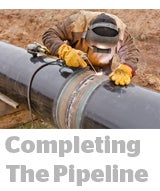 Smart, a publisher ad server and exchange, is growing out of its supply-side roots with the acquisition of the DSP Liquid M, the company said on Wednesday.
Smart, a publisher ad server and exchange, is growing out of its supply-side roots with the acquisition of the DSP Liquid M, the company said on Wednesday.
Terms of the deal were not disclosed.
Liquid M is a relatively small DSP, with a little over $10 million in revenue this year and 20-25 employees, according to Smart CEO Arnaud Créput. But he said Smart saw a chance for “opportunistic acceleration” of its strategy to develop a demand-side business.
Smart is on pace for overall revenue of almost $140 million in 2019, up 35% from last year. In 2020, with Liquid M in its arsenal, Créput said the goal is to reach about $195 million (€175 million).
Créput sees strong cross-selling opportunities now that Smart controls the full funnel and exchange.
He said buyers that consolidate on the Liquid M DSP and Smart SSP will pay lower fees and will get improved reporting on campaigns, Créput said. For instance, every campaign on the full-stack Smart platform will disclose the margins for every vendor paid from the media budget, as well as log files and IDs for each impression.
Smart isn’t the first SSP (or DSP) to make the jump across the exchange, Créput said. “We’ve seen this with big and too-big competitors.”
Google creates pricing power and synergies with its unified platform, as do AT&T’s Xandr, Verizon Media Group, Amazon and others. Publisher technology provider FreeWheel launched a DSP this year as well, but there too the use case is primarily for Comcast advertisers buying Comcast inventory, as opposed to the open web.MediaMath and leading independent SSPs Rubicon Project and Telaria are trying to accomplish a similar goal with a new media-buying product called SOURCE, launched in October, that promises supply chain and inventory transparency and compressed tech margins, but without the DSP and SSPs entering a new category.
Créput said Smart has some demand-side relationships already. The company has a contextual advertising tool it has sold to agencies and marketers for years. And Smart has hired media-buying execs to grow those relationships this year, he said, plus a senior demand-side salesperson in the United States starting in January.
“We remain DSP agnostic,” Créput said. “What we’ve heard from the demand side though is a desire to get closer to the inventory.”












